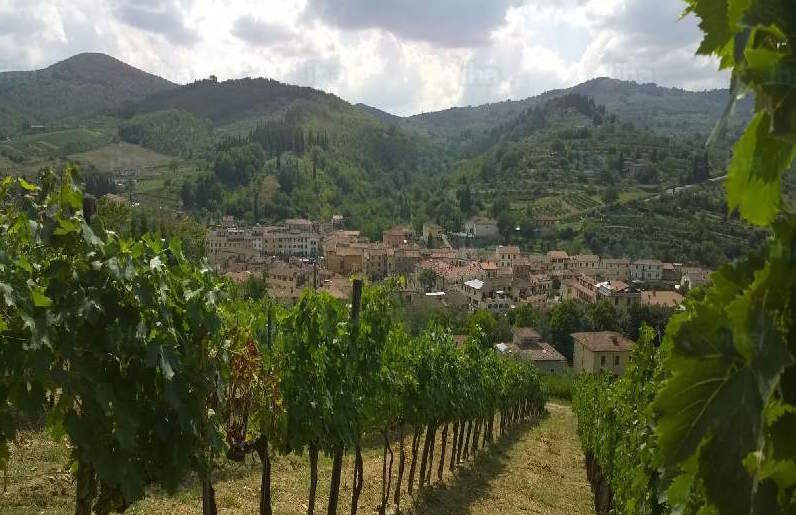- Read offline
- Access all content
- Use the in-app Map to find sites, and add custom locations (your hotel...)
- Build a list of your own favourites
- Search the contents with full-text search functionality
- ... and more!
Along the Chiantigiana
Heart of the Chianti

The scenic Chiantigiana (SS222) is the old Florence-Siena high road, bisecting the Chianti region. From Florence, it passes through Grassina. For centuries before the arrival of washing machines this village was famous as the place where Florence washed its clothes (you wouldn't want to dunk your finery in the Arno if you could afford not to). There's a charming bronze statue of a washerwoman (La Lavandaia), with her washboard in the pond of Piazza Umberto I.
Up in the hills to the east of the Chiantigiana, San Polo in Chianti is a centre of the Chianti Classico region, and also of Tuscany’s iris industry, celebrated in an Iris Festival in May. On a hill from San Polo you can see a lonely building once belonging to the Knights Templar; an equally ancient church, San Miniato in Robbiana, was reconsecrated in 1077 by the Bishop of Fiesole, according to a still legible inscription.
Back on the Chiantigiana, Strada in Chianti (14km from Florence) is thought to take its odd name from an old Roman road. Beyond that is Chiocchio. up in the hills to the east of it is the hamlet of Cintoia, where the little church of Santa Maria a Cintoia has a beautiful 15th-century panel attributed to Francesco Granacci.
Next comes the 'capital' of the Chianti and its wines, Greve in Chianti.
South of Greve, the next big village is Panzano in Chianti; just outside it the Romanesque Pieve di San Leonino has some fine trecento altarpieces. South of Panzano comes Castellina in Chianti, and then it's over the border into the province of Siena.
Image by IHA

